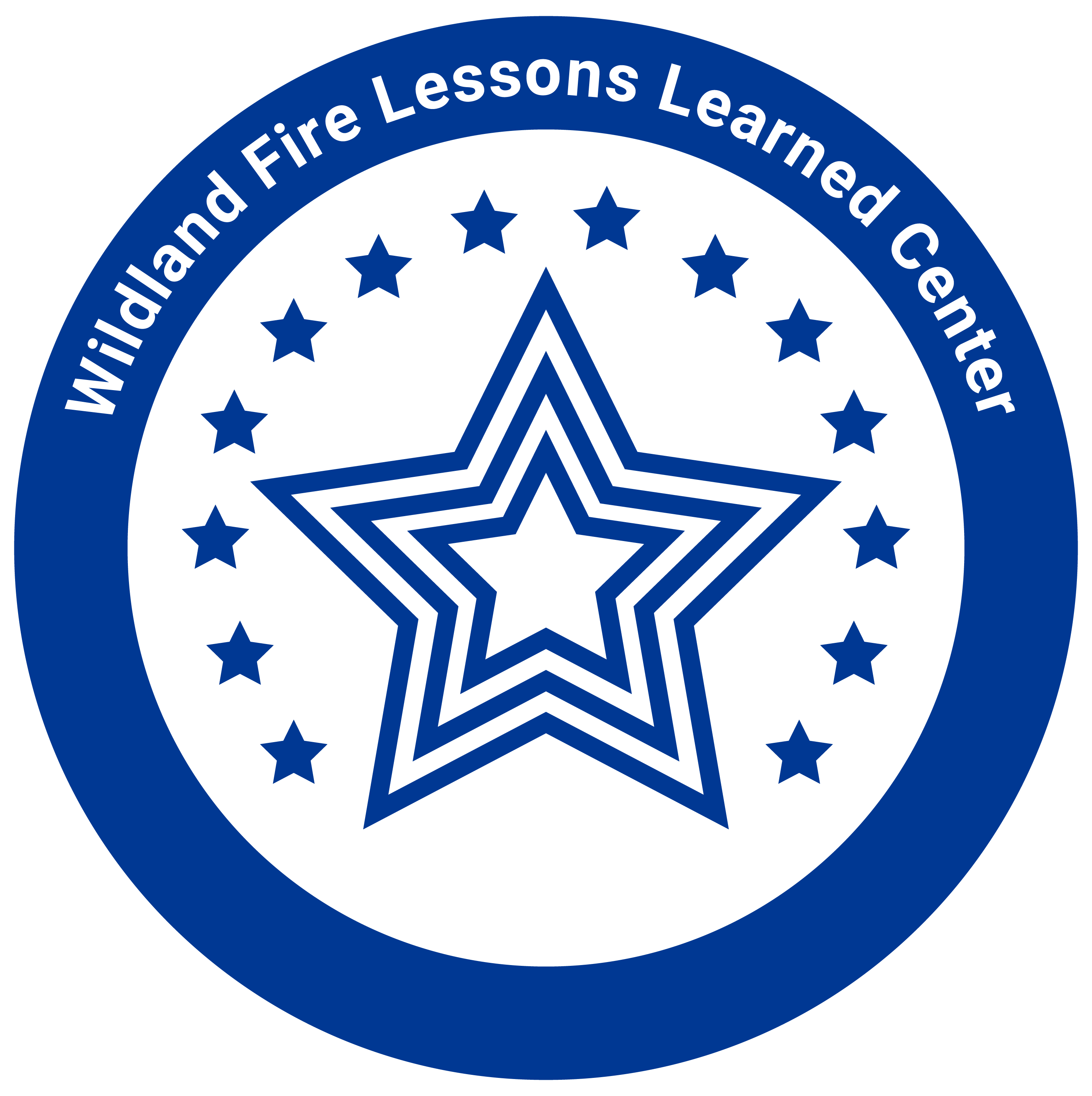
The Wildland Fire Lessons Learned Center’s quarterly publication Two More Chains is dedicated to sharing relevant lessons, unique perspectives, and thought-provoking features with all wildland firefighters. Since 2011, this publication has been committed to promoting learning in the wildland fire service.
-
Spring 2018Bad Apple TheoryThis issue focuses on the “Bad Apple Theory” and provides related insights into Paul Gleason and the Cerro Grande Fire. A Podcast and 3 Blog Posts are essential elements of this Two More Chains.
-
Winter 2018Nuts and BoltsWe provide the nuts and bolts on real-deal incidents that translate into actions you can take.
-
Fall 2017Why Identity MattersWhy Identity Matters. What happens when you are “all in” in your wildland fire service job and you suddenly get the boot—whether through mandatory retirement, freak accident, family demands, or any other “involuntary separation”? “Why Identity Matters” is the focus of this issue. Page 1 provides links to a Podcast and Blog Post that are essential elements to our multifaceted look at this complex issue. In addition, we realized that we needed to talk to Wally Ochoa and share his remarkable story. Wally, Lead Sawyer on the Winema Interagency Hotshot Crew, received a career-ending injury on the 2014 Freezeout Ridge Fire. As you read about Wally’s ordeal, ask yourself hard questions about who you are, what you do, what risks you take—and what those risks are worth. In Travis Dotson’s “Ground Truths” he explores this “Identity” theme by asking: “What if we momentarily viewed wildland fire and all that comes with it as a drug?”
-
Summer 2017Low Hanging FruitWhen it comes to unnecessary risk and exposure to heat, smoke, fatigue, and noise, could you be a “Bad Ass” or a “Dumb Ass”? Maybe it’s time you put a pinch of practical in your tactical pause. George Broyles, Fire and Fuels Project Leader for the U.S. Forest Service’s National Technology and Development Program, is helping us on this important front. George has explored how these four areas (“Heat, Smoke, Fatigue and Noise”) all conspire against wildland firefighters. “They are so common in our work environment, we may not even consider them hazardous,” George warns. Also in this issue, Ted Adams, Assistant Supervisor on the Hells Canyon Wildland Fire Module on the Payette National Forest, shares his passion and talks about his efforts behind bridging the gap between research and the field.
-
Spring 2017Suicide in the Wildland Fire ServiceSuicide in the Wildland Fire Service. What are the statistics on wildland firefighter suicide deaths? Why does such a negative stigma prevent discussing suicide in our business? What should we all know about suicide and suicide prevention? Answers to these significant questions—and more—are explored in this informative issue. Folks who have firsthand experience—and lessons—regarding suicide share their heartfelt stories. In addition, many of our wildland fire agencies’ subject matter experts in this field share their insights in a separate companion report. (See the links to these two documents below.)
-
Winter 2017Student of Fire"Student of Fire.” What does this term really mean? Travis Dotson explores what Paul Gleason might have intended when Gleason coined this term. In doing so, Travis challenges us to reflect and improve in all of our endeavors and provides us tips on how to best contribute to an atmosphere that is conducive to learning. Bre Orcasitas continues the conversation in this issue’s One of Our Own section. And we also provide the latest lessons on the hazards of fuel geysers, including direct access to the new “Fuel Geyser Reporting Form” on our Shop Talk page.
-
Fall 2016The Big LieIn this issue we explore the intent of—and response to—Mark Smith’s essay “The Big Lie.” Smith shares why he wrote this provocative piece and what he believes our next steps should be. Veteran wildland firefighter and current AFMO Dave Williams continues “The Big Lie” discussion in the “One of Our Own” feature. Likewise, former McCall Smokejumper Matt Carroll continues the discussion from our last Two More Chains in his “In Defense of Bias” article. And Travis Dotson responds to a reader who found great fault in his “Ground Truths” column in our Summer Issue.
-
Summer 2016Gender and Leadership, Bias and DiversityIn this issue, we provide an opportunity for two firefighters to share their experiences with things we don’t talk much about: gender and leadership as well as bias and diversity. In the cover story, Rachel Reimer, an Initial Attack Crew Leader in British Columbia, Canada, ties together gender, leadership and vulnerability.
Sara Brown draws upon her diverse fire experience as a hotshot, helitack crewmember, smokejumper and fire ecologist to discuss diversity, bias and gender in our “One of Our Own” feature. -
Spring 2016Illusion of ControlReady to tip some sacred cows? This issue’s cover story examines and explores the “Illusion of Control” concept—how the assumption that complete control of our safety in the wildland fire environment is possible might be a significant misconception. In our “One of Our Own” feature, we introduce you to Jeremy Bailey and his quest to promote and build a prescribed fire workforce. We also introduce you to the four individuals who recently received the 2015 Paul Gleason Lead by Example Award.
-
Winter 201620th Anniversary IssueThe theme of our special 20th Anniversary Issue focuses on how we need to widen the definition of “survivor” of traumatic fire line accidents. We share the stories, insights, and lessons of four survivors of a line of duty wildland firefighter death. In doing so, we explore the concept of the “Bull’s Eye” and how the farther you get from the Bull’s Eye, the less personal the event is, the less real it is. While this issue is dedicated to acknowledging the voice and vital perspectives of all survivors, its overall intent is to underscore the simple truth that this could all happen to you.

